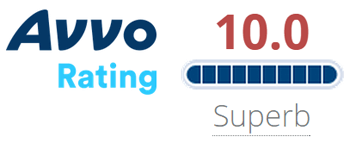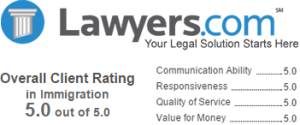UNCLAS STATE 163054
VISAS-
E.O. 12958: N/A
TAGS: CVIS
SUBJECT: CHILD STATUS PROTECTION ACT OF 2002: ALDAC #1
REF: A) P.L. 107-208 OF AUGUST 6, 2002, H.R. 1209 B) STATE 123775
1. Summary: This cable provides the text of a new law, the “Child Status Protection Act of 2002”, signed into law by the President on AUGUST 6, 2002 and effective on that date. It also provides initial interpretative guidance regarding it, as well as procedures to be used to implement it. The new law radically changes the process for determining whether a child has “aged out” for the purpose of the issuance of visas and the adjustment of status of aliens in most immigrant categories. End summary.
2. The text of the law is as follows:
SECTION 1. SHORT TITLE.
This Act may be cited as the
Child Status Protection Act’.
SEC. 2. USE OF AGE ON PETITION FILING DATE, PARENT’S NATURALIZATION DATE, OR MARRIAGE TERMINATION DATE, IN DETERMINING STATUS AS IMMEDIATE RELATIVE.
Section 201 of the Immigration and Nationality Act (8 U.S.C. 1151) is amended by adding at the end the following:
(f) RULES FOR DETERMINING WHETHER CERTAIN ALIENS ARE IMMEDIATE RELATIVES-
(1) AGE ON PETITION FILING DATE- Except as provided in paragraphs (2) and (3), for purposes of subsection (b)(2)(A)(i), a determination of whether an alien satisfies the age requirement in the matter preceding subparagraph (A) of section 101(b)(1) shall be made using the age of the alien on the date on which the petition is filed with the Attorney General under section 204 to classify the alien as an immediate relative under subsection (b)(2)(A)(i).
(2) AGE ON PARENT’S NATURALIZATION DATE- In the case of a petition under section 204 initially filed for an alien child’s classification as a family-sponsored immigrant under section 203(a)(2)(A), based on the child’s parent being lawfully admitted for permanent residence, if the petition is later converted, due to the naturalization of the parent, to a petition to classify the alien as an immediate relative under subsection (b)(2)(A)(i), the determination described in paragraph (1) shall be made using the age of the alien on the date of the parent’s naturalization.
(3) AGE ON MARRIAGE TERMINATION DATE- In the case of a petition under section 204 initially filed for an alien’s classification as a family-sponsored immigrant under section 203(a)(3), based on the alien’s being a married son or daughter of a citizen, if the petition is later converted, due to the legal termination of the alien’s marriage, to a petition to classify the alien as an immediate relative under subsection (b)(2)(A)(i) or as an unmarried son or daughter of a citizen under section 203(a)(1), the determination described in paragraph (1) shall be made using the age of the alien on the date of the termination of the marriage.’.
SEC. 3. TREATMENT OF CERTAIN UNMARRIED SONS AND DAUGHTERS SEEKING STATUS AS FAMILY-SPONSORED, EMPLOYMENT-BASED, AND DIVERSITY IMMIGRANTS.
Section 203 of the Immigration and Nationality Act (8 U.S.C. 1153) is amended by adding at the end the following:
(h) RULES FOR DETERMINING WHETHER CERTAIN ALIENS ARE CHILDREN-
(1) IN GENERAL- For purposes of subsections (a)(2)(A) and (d), a determination of whether an alien satisfies the age requirement in the matter preceding subparagraph (A) of section 101(b)(1) shall be made using–
(A) the age of the alien on the date on which an immigrant visa number becomes available for such alien (or, in the case of subsection (d), the date on which an immigrant visa number became available for the alien’s parent), but only if the alien has sought to acquire the status of an alien lawfully admitted for permanent residence within one year of such availability; reduced by
(B) the number of days in the period during which the applicable petition described in paragraph (2) was pending.
(2) PETITIONS DESCRIBED- The petition described in this paragraph is–
(A) with respect to a relationship described in subsection (a)(2)(A), a petition filed under section 204 for classification of an alien child under subsection (a)(2)(A); or
(B) with respect to an alien child who is a derivative beneficiary under subsection (d), a petition filed under section 204 for classification of the alien’s parent under subsection (a), (b), or (c).
(3) RETENTION OF PRIORITY DATE- If the age of an alien is determined under paragraph (1) to be 21 years of age or older for the purposes of subsections (a)(4) and (d), the alien’s petition shall automatically be converted to the appropriate category and the alien shall retain the original priority date issued upon receipt of the original petition.’
SEC. 4. USE OF AGE ON PARENT’S APPLICATION FILING DATE IN DETERMINING ELIGIBILITY FOR ASYLUM.
Section 208(b)(3) of the Immigration and Nationality Act (8 U.S.C. 1158(b)(3)) is amended to read as follows:
(3) TREATMENT OF SPOUSE AND CHILDREN-
(A) IN GENERAL- A spouse or child (as defined in section 101(b)(1) (A), (B), (C), (D), or (E)) of an alien who is granted asylum under this subsection may, if not otherwise eligible for asylum under this section, be granted the same status as the alien if accompanying, or following to join, such alien.
(B) CONTINUED CLASSIFICATION OF CERTAIN ALIENS AS CHILDREN- An unmarried alien who seeks to accompany, or follow to join, a parent granted asylum under this subsection, and who was under 21 years of age on the date on which such parent applied for asylum under this section, shall continue to be classified as a child for purposes of this paragraph and section 209(b)(2), if the alien attained 21 years of age after such application was filed but while it was pending.’
SEC. 5. USE OF AGE ON PARENT’S APPLICATION FILING DATE IN DETERMINING ELIGIBILITY FOR ADMISSION AS REFUGEE.
Section 207(c)(2) of the Immigration and Nationality Act (8 U.S.C. 1157(c)(2)) is amended–
(1) by striking
(2)’ and inserting
(2)(A)’; and (2) by adding at the end the following:
(B) An unmarried alien who seeks to accompany, or follow to join, a parent granted admission as a refugee under this subsection, and who was under 21 years of age on the date on which such parent applied for refugee status under this section, shall continue to be classified as a child for purposes of this paragraph, if the alien attained 21 years of age after such application was filed but while it was pending.’
SEC. 6. TREATMENT OF CLASSIFICATION PETITIONS FOR UNMARRIED SONS AND DAUGHTERS OF NATURALIZED CITIZENS.
Section 204 of the Immigration and Nationality Act (8 U.S.C. 1154) is amended by adding at the end the following:
(k) PROCEDURES FOR UNMARRIED SONS AND DAUGHTERS OF CITIZENS-
(1) IN GENERAL- Except as provided in paragraph (2), in the case of a petition under this section initially filed for an alien unmarried son or daughter’s classification as a family-sponsored immigrant under section 203(a)(2)(B), based on a parent of the son or daughter being an alien lawfully admitted for permanent residence, if such parent subsequently becomes a naturalized citizen of the United States, such petition shall be converted to a petition to classify the unmarried son or daughter as a family-sponsored immigrant under section 203(a)(1).
(2) EXCEPTION- Paragraph (1) does not apply if the son or daughter files with the Attorney General a written statement that he or she elects not to have such
conversion occur (or if it has occurred, to have such conversion revoked). Where such an election has been made, any determination with respect to the son or daughter’s eligibility for admission as a family- sponsored immigrant shall be made as if such naturalization had not taken place.
(3) PRIORITY DATE- Regardless of whether a petition is converted under this subsection or not, if an unmarried son or daughter described in this subsection was assigned a priority date with respect to such petition before such naturalization, he or she may maintain that priority date.
(4) CLARIFICATION- This subsection shall apply to a petition if it is properly filed, regardless of whether it was approved or not before such naturalization.’
SEC. 7. IMMIGRATION BENEFITS FOR CERTAIN ALIEN CHILDREN NOT AFFECTED.
Section 204(a)(1)(D) of the Immigration and Nationality Act (8 U.S.C. 1154(a)(1)(D)) is amended by adding at the end the following new clause:
(iii) Nothing in the amendments made by the Child Status Protection Act shall be construed to limit or deny any right or benefit provided under this subparagraph.’
SEC. 8. EFFECTIVE DATE.
The amendments made by this Act shall take effect on the date of the enactment of this Act and shall apply to any alien who is a derivative beneficiary or any other
beneficiary of–
(1) a petition for classification under section 204 of the Immigration and Nationality Act (8 U.S.C. 1154) approved before such date but only if a final determination has not been made on the beneficiary’s application for an immigrant visa or adjustment of status to lawful permanent residence pursuant to such approved petition;
(2) a petition for classification under section 204 of the Immigration and Nationality Act (8 U.S.C. 1154) pending on or after such date; or
(3) an application pending before the Department of Justice or the Department of State on or after such date.”
INTERPRETATION
————–
3. The intent of this legislation (CSPA) is to preserve child status for certain alien children beneficiaries who age-out, and particularly with respect to section 3, age- out because of delays in processing. Age-out benefits are extended to applicants who should be processed as Immediate Relative children (IR-2, IR-3, IR-4) (note that although IR-3s and IR-4s are technically covered by the new law, application in those cases would appear to be very rare) and applicants who should be processed as Second Preference children (F2-A), but who attain the age of 21 before their cases are finalized, as well as derivative beneficiary children in all preference categories and DV cases.
4. The law also provides relief for F2B applicants in cases where the petitioner has naturalized and the applicant would be disadvantaged by a conversion to F1
status due to a less favorable F1 cut-off date. (This particular provision is only of interest to natives of those few countries (e.g., the Philippines) where the F1 cut-off date is earlier than the F2B cut-off date).
5. The CSPA also provides age-out relief for children of asylees and refugees, but these sections will not be addressed in this cable since interpretations regarding them must come from INS.
6. Because the language in some sections of the CSPA is extremely complicated, especially section 3, there may be refinements in interpretation with additional guidance to follow, as needed. To the extent possible, automated systems will be reworked to implement the new rules, but necessary adjustments likely will not be completed in the immediate future. Any new procedures or processes to be used in these cases will be the subject of future cables as they are developed.
Section 2- Immediate Relatives
——————————-
7. Section 2 establishes rules for determining whether certain aliens are Immediate Relatives. Under the new rules, consular officers will use the age of the beneficiary on the date of filing the Form I-130, Petition for Alien Relative, to determine whether the applicant qualifies as an IR-2, IR-3 or IR-4. For example, if a Form I-130 is filed for a child of an Amcit when the child is under 21, the child will permanently qualify as a child as long as he/she does not marry.
8. Section 2 also amends the Act to allow the age of an alien child who is a Second Preference beneficiary but whose parent/s naturalizes and whose petition is converted to Immediate Relative classification, to be considered the age on the date of naturalization. Consular officers will now use the child’s age on the date of the parent’s naturalization to determine whether the child will be eligible for Immediate Relative status. For example, if a LPR files a Form I-130 for a 17 year-old son and then naturalizes when the son is 20, the son will remain eligible for a visa as an IR-2, even if the son has attained the age of 22 on the date of visa application. The applicant should submit evidence of his parent’s naturalization (a bona fide copy of the naturalization certificate) to establish eligibility for age-out relief
under this provision of the CSPA.
9. Section 2 also amends the Act to allow third preference married children of Amcits to use the age on the date of the termination of a marriage when applying for a visa. If the alien is under 21 at the time of the termination of his/her marriage, then his/her petition will convert to IR- 2. If the alien is 21 or older on the date his/her marriage is terminated, an F-3 will convert to F-1 status. For example, if the 19 year-old married son of an Amcit petitioner obtains a divorce before attaining 21, as long as he remains unmarried, the son will be classifiable as an IR-2, even if he does not apply for a visa until age 23.
10. Aliens who qualify as a K-4 child are eligible for child status protection under this section if a separate immediate relative petition has been filed in their name and they are accompanying a K-3 parent.
Section 3-Preference and DV Categories
————————————–
11. Section 3 of the CSPA applies to:
— F2A principal applicants;
— derivative applicants in all family- and employment-based preference categories; and
— derivative applicants in DV cases.
12. This section provides relief from age-out by establishing the alien’s age as of the date a visa becomes available for the alien (or the alien’s parent), minus the number of days that the petition was pending. Only those aliens who seek to acquire the status of an alien lawfully admitted for permanent residence within one year of visa availability are eligible for relief under this section. For this section, visa availability is defined to require both a current priority date and an approved petition. The number of days a petition has been pending is calculated from the date the petition was filed to the date the petition is adjudicated. “Seeks to acquire the status of an LPR” will be defined to mean apply for an immigrant visa, i.e., the date of visa application.
13. Advisory Opinions. Because the interpretation of Section 3 is the subject of ongoing discussions with the Service, the Department requests that, until advised otherwise, posts seek an Advisory Opinion from CA/VO/L/A on cases that fall within this section of the CSPA.
14. The Department’s initial interpretation of this section can be illustrated by the following two examples.
— If an LPR parent filed an I-130 in 1998 when his son/daughter was 20 and the visa became available today and the I-130 was never adjudicated until today, the beneficiary’s “age” when determining preference category would be equal to the age of the alien on the date the priority date became current (24 years) minus the period the petition was pending adjudication (4 years), which would mean the alien’s age would be deemed to be 20. The alien, however, would only benefit from this special treatment if s/he applies for a visa within one year of the visa becoming available. Even though the beneficiary in this example is chronologically age 24 today (the date on which his visa becomes available)-by applying the formula in section 3, he is only 20 because his chronological age on the date his visa becomes available has been reduced by the number of days his petition has been pending (4 years).
— If, however, this same Form I-130 had been adjudicated in 2000, the beneficiary’s “age” would be 22 when determining preference category. Although the beneficiary is chronologically 24 (his age on the date his visa becomes available), his petition was only pending for 2 years, so only two years are deducted from his age at the time the priority date became current, making the alien 22.
15. DV Applicants. Section 3 also applies to derivative DV applicants. Because the DV process differs substantially from the preference process, however, treatment of DV derivatives will also be somewhat different. For the purpose of calculating the period during which the “petition is pending”, VO has decided to use the period between the first day of the DV mail-in application period for the program year in which the principal alien has qualified and the date on the letter notifying the principal applicant that his/her application has been selected (congratulatory letter). That period will be subtracted from the derivative alien’s age on the date the visa becomes available to the principal alien. The date the visa becomes available will be the first day on which the Department determines the principal alien’s selection number becomes eligible for visa processing.
16. V Applicants. While subject to revision, the Department interprets V visa applicants as ineligible for child status protection under this section.
17. Application to Pending cases. The age-out protections of the CSPA apply to the following three classes cases:
— cases where the petition or visa application was filed on or after the date of enactment (August 6, 2002);
— cases where the petition was filed prior to August 6, 2002 but was still pending (i.e., not yet approved) on that date; and
— certain cases where the petition was approved prior to August 6, 2002, but only if a final determination has not been made on the beneficiary’s (including derivative beneficiary’s) application for a visa or adjustment of status prior to that date. At present, VO is interpreting this to mean that an alien whose IV application was denied prior to August 6 because s/he aged out or was otherwise found ineligible cannot benefit from Section 3. However, for this purpose a 221(g) denial will not be considered a final determination. Therefore, an alien whose application was filed prior to August 6, but was refused on 221(g) grounds will receive the benefit of Section 3 so long as the application was otherwise pending on August 6. Under this interpretation, beneficiaries (and derivative beneficiaries) of petitions approved prior to August 6, 2002 who never applied for a visa prior to August 6 because they had aged out will receive no benefit from Section 3 and cannot apply afterward in order to receive a benefit. (Note that these are preliminary interpretations and could change after further interagency discussions). DV applicants applying on or after August 6 or whose cases were pending on that date will receive the benefit of Section 3.
18. Applicability of Section 424 of the USA Patriot Act.
The 45 day age-out protection afforded by section 424 will continue to apply to all relevant cases. Where both are available to an applicant, the more generous benefit should be applied to the alien’s case.
Section 6-Unmarried Sons and Daughters of Amcits
————————————————
19. Section 6 of the CSPA addresses the problem encountered by Philippine F2-B applicants whose parents naturalize. Automatic conversion from F2B to F1 at the time of their parent’s naturalization disadvantages these beneficiaries because the cutoff date for Philippine F1s is earlier than the cutoff date for Philippine F2Bs. Although this section continues to allow for the automatic conversion of preference categories when a parent naturalizes, it also permits the son/daughter beneficiary to make a request to the Attorney General that such conversion not occur. At this time, it is not known how this request to the Attorney General will be made or what formalities will be required.
20. The following will illustrate what a beneficiary would consider before deciding whether to opt-out of an automatic conversion from second to first preference:
— Assume that for August 2002, the F2B cutoff date for French unmarried sons and daughters of LPRs is December 8, 1993 and the F1 cutoff date for French unmarried sons and daughters of Amcits is July 1, 1996. Thus, if a LPR files a Form I-130 for his 14-year old, unmarried French son and then naturalizes, the son’s immigrant category would automatically convert from the second preference to the first preference. In this example, this would work to the advantage of the beneficiary and he would likely not request that the automatic conversion be prevented in his case.
— In the cases involving Filipino unmarried sons or daughters, the outcome of automatic conversion from second to first preference is very different. For example, for August 2002, the F2 cutoff date for Filipino unmarried sons and daughters of LPRs is December 3, 1993, but the F1 cutoff date for Filipino unmarried sons and daughters of Amcits is November 1, 1989. In this instance, the son would likely request that the automatic conversion from second to first preference not occur.
IMPLEMENTATION
—————
21. As with the 45-day age-out cases described in ref B, there will not be any short-term fix made to the IV system for processing these visas. Currently, the IV system locks cases for children who become 21 years old and converts age-out cases to an adult son or daughter category on an applicant’s twenty-first birthday. Posts will therefore manually issue by typewriter any case that might qualify under the Child Status Protection Act, as the system will not adjust to allow consular processing for these cases. The Department is studying changes to the IV software that will allow the system to be used to issue these visas. The following are instructions on how to issue IVs manually for these cases: Use NIV to do the requisite CLASS namecheck. Print out the namecheck results. Retain one copy of the namecheck at post and insert a second copy into the IV packet normally produced for IV applicants; the adjudicating consular officer should initial both copies of the namecheck results. Type all the information normally required on a blank OF- 155F form. Add the notation: P.L. 107-208, Child Status Protection Act to IVs issued under this act. Use the space on the OF-155A directly under Immigrant Visa and Alien Registration at the top center of the form. For K-4 beneficiaries, the MRV should be similarly annotated. 22. To avoid problems for these applicants at POEs, posts will include a memorandum as follows and place the memo on top of the manually issued IV foil: (begin text of memo)
To: INS Inspector, POE From: US Embassy/Consulate (Name)
Date: Subject: Child Status Protection Act, Age-outs. This visa was issued manually due to the constraints of the Child Status Protection Act, and information will not appear in IV DataShare. If you have any questions, please contact the originating U.S. Embassy or Consulate or the INS Forensic Document Lab. (end text of memo to INS). 23. Posts must report all manual issuances under the Child Status Protection Act to the Department before the issued visa foil is given to the applicant. For all IVs manually issued under Section 424, post should send an e-mail to the CA Support Desk and ask that a ticket be opened to make a change in post’s database. Provide name and DOB of applicant, visa class, case number, A-number (IV foil number), date of issuance, date of expiration, foreign state chargeability, and USERID of authorizing/adjudicating officer.
24. In order to avoid unnecessary work for posts and to minimize the possibility of issuances not making it into the database in a timely fashion, visas should be issued to expire after the actual 21st birthday only when the applicant has either already reached his or her 21st birthday or post believes that the applicant will likely not be able to enter the U.S. prior to turning 21.
25. In order to ensure that applicants do not lose a benefit to which they are legally entitled, in cases where posts issue visas expiring on the actual 21st birthday to applicants who can benefit from the Child Status Protection Act, the applicants should be provided with a letter or other written statement informing them that, should they be unable to enter U.S. prior to turning 21, they are entitled to issuance of a new visa with a later expiration date. In such cases posts should issue a replacement visa without charging the applicant for the new visa. Details of the replacement visa should be reported to the CA Support Desk as per instructions in reftel. The letter provided to the applicant should include the following language:
“Eligibility in the immigrant visa category under which your visa has been issued would normally terminate on your 21st birthday. The visa you are being issued today allows you to enter the United States only until the day prior to your 21st birthday. However, under the provisions of the Child Status Protection Act you can continue to qualify for immigration benefits past your 21st birthday. If for any reason you are unable to enter the United States with your immigrant visa prior to turning 21, this office can issue you a replacement visa valid for a limited additional period past your 21st birthday. If you find that you will be unable to travel prior to your 21st birthday, please contact this office prior to your 21st birthday by (post should insert contact information here) so that we can issue you a replacement visa.”
26. NVC will attempt to determine if it is holding “age-out” cases that meet the criteria of the CSPA and should now be forwarded to post. Posts should also make every effort to identify files held at post which include applicants who can benefit form the CSPA, in particular:
–Cases in which post denied a visa on or after August 6 because an applicant aged out;
–Cases pending final adjudication from which derivative beneficiaries have been excluded because they turned 21.
–Cases pending at post which have been reclassified from IR-2 to F-1 or from F-2A to F-2B because an applicant turned 21.
27. Minimize considered.
POWELL
Client Reviews

Know Their Job Well And Perform It Flawlessly
“Don't do the mistake we did and try to save few bucks going with nonprofessionals and sole practitioners! It will end up not only costing you much more in the long run, but also putting your status in jeopardy which can have a priceless impact. It is one of the most important steps in your life.”
- Sgt. Danny Lightfoot, Los Angeles, California
Read More Reviews
Zoom Consultations Available!
Decades of Immigration Experience Working for You
What Can We Help You With - Videos
Carl Shusterman
Immigration Attorney Carl Shusterman has 40+ years of experience. He served as an attorney for the U.S. Immigration and Naturalization Service (INS) from 1976 until 1982, when he entered private practice. He has testified as an expert witness before the US Senate Immigration Subcommittee. Carl was featured in SuperLawyers Magazine. Today, he serves as Of Counsel to JR Immigration Law Firm.







